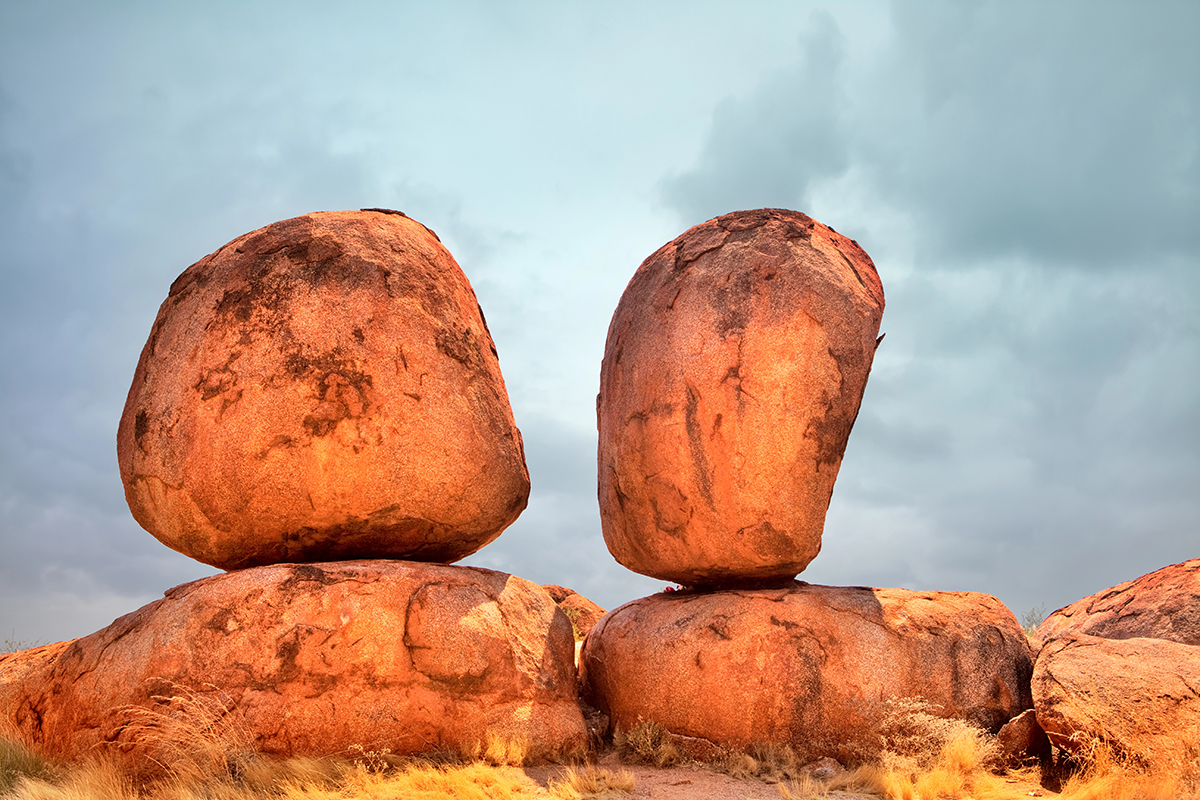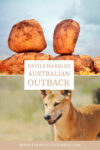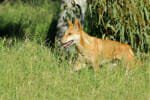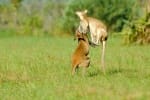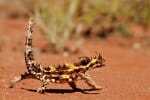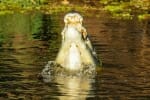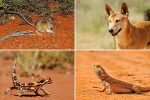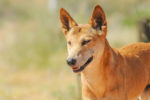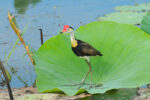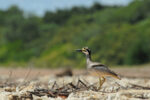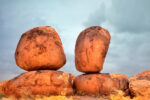The Devils Marbles is a spectacular formation of rounded granite boulders stacked precariously on top of each other as if they have fallen out of the sky. It is one of the most remarkable hidden gems of Australia’s Northern Territory.
Truth be told, the marbles are not really hidden. Stuart Highway runs right past them. But they lie over 400 km from Alice Springs amidst hundreds of kilometres of fairly uninteresting landscape. So you only come across them if you are driving from Alice Springs to Darwin, another 1,000 km away.
In fact, Devils Marbles are a convenient overnight stop on Alice Springs to Darwin drive. There is a quirky place to stay just a few kilometres away, a place known as Wycliffe Well – the self-proclaimed UFO capital of Australia.
What are the Devils Marbles?
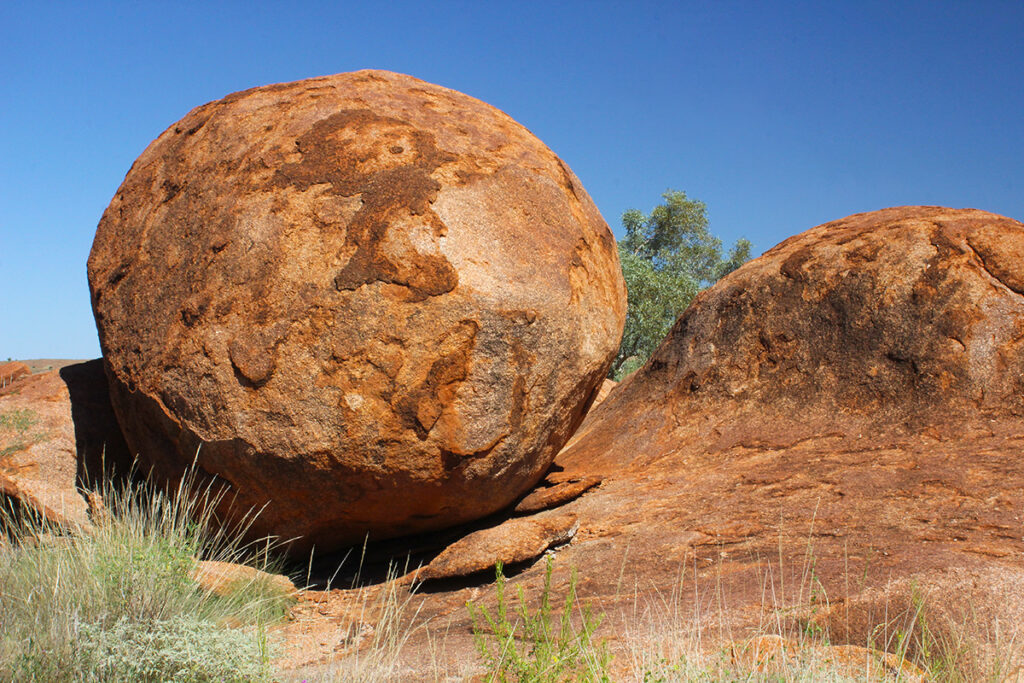
The marbles are the huge, rounded granite boulders that sit on top of a rusty-coloured, flat plain. They were supposedly carved by the elements through washing away of the surrounding sandstone over incomprehensible time scales.
To the traditional owners of the land, the Kaytete, Warumungu, Warlpiri and Alyawarra people, the formations are known as Karlu Karlu and represent a sacred site.
Devils Marbles are part of the Karlu Karlu/Devils Marble Conservation Reserve, which spans over 1,802 hectares. The name of the reserve reflects that it is jointly managed by Parks and Wildlife Service of the Northern Territory and the traditional Aboriginal owners.
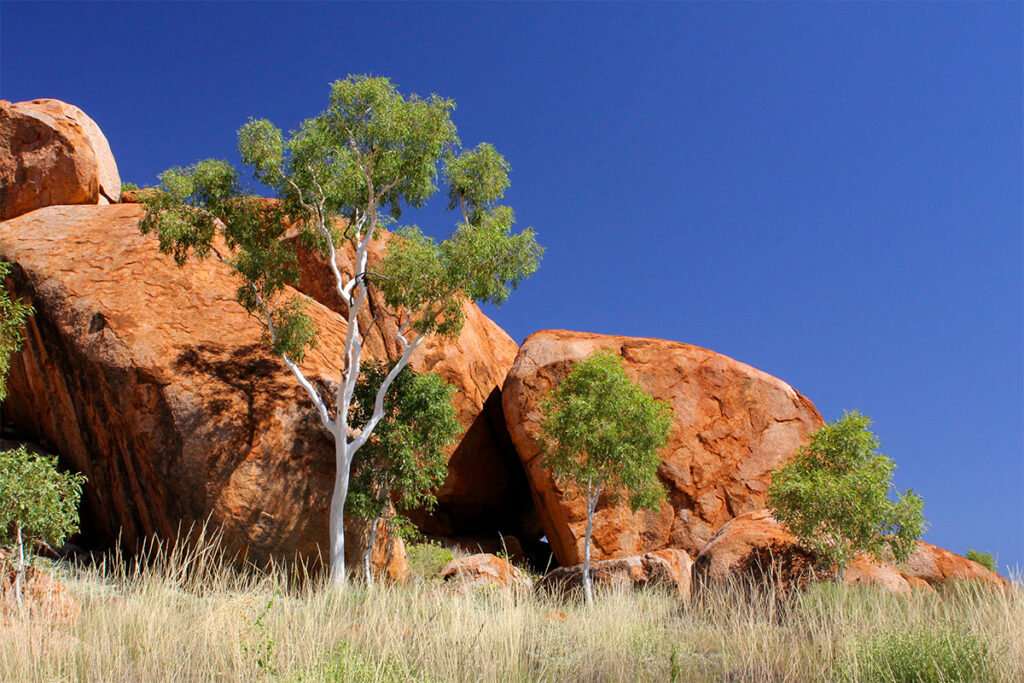
The Aboriginal term Karlu Karlu is roughly translated as “round boulders”. The English name “Devil’s Marbles” reportedly comes from John Ross, who led the 1870 Australian Overland Telegraph Line expedition. He is quoted saying: “This is the Devil’s country; he’s even emptied his bag of marbles around the place!”
The marbles come in all shapes and sizes, ranging from 50cm to 6m tall. The most eye-popping formations are those with ball-like giant boulders balancing precariously on top of flat-topped rocks.
Here’s how the marbles were formed according to the geologists. Some time, millions of years ago, an upsurge of molten rock had cooled and solidified beneath a layer of sandstone. As the granite was solidifying, it formed with vertical and horizontal fractures. In time, these fractures deepened, and eventually, rectangular blocks were formed.
Over the next few million years water seeping through the cracks eroded the softer sandstone and then began polishing off the granite. That’s why we see rounded granite boulders pitched on top of one another.
So essentially, you are looking at the molten rock from the earth’s core making its way to the surface and solidifying in the process. It’s as cool as hiking up an ancient volcano vent.
Wildlife at Devils Marbles
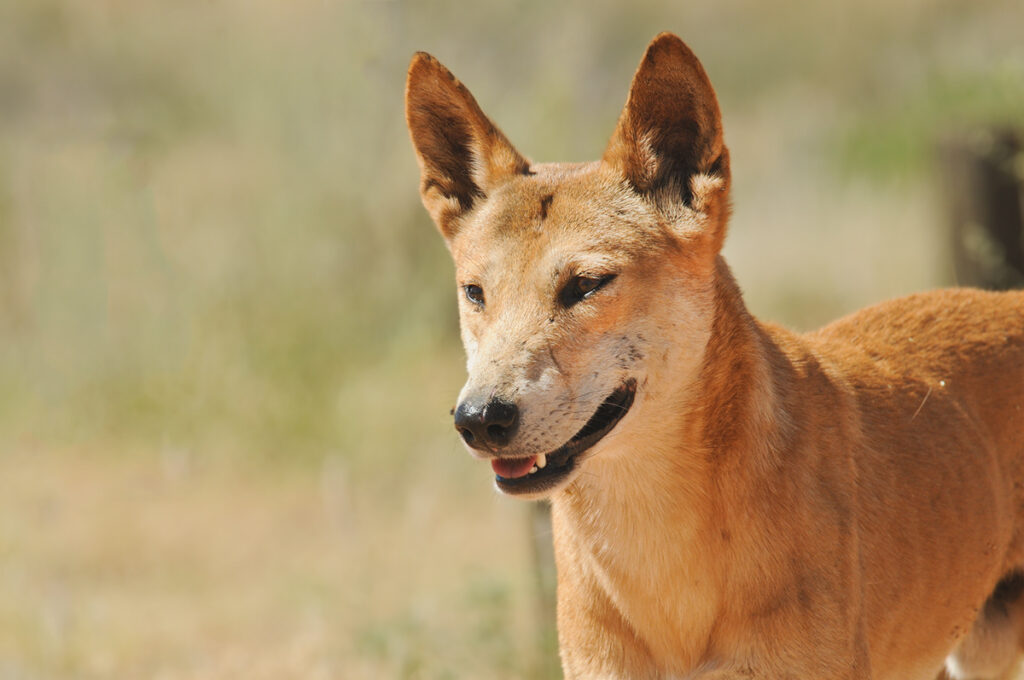
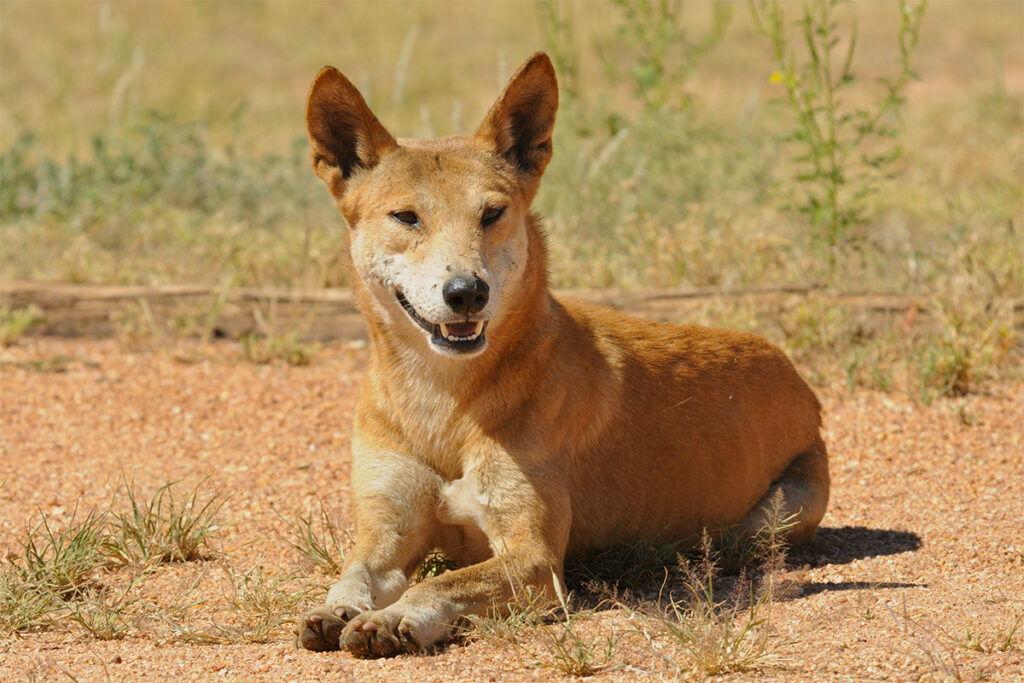
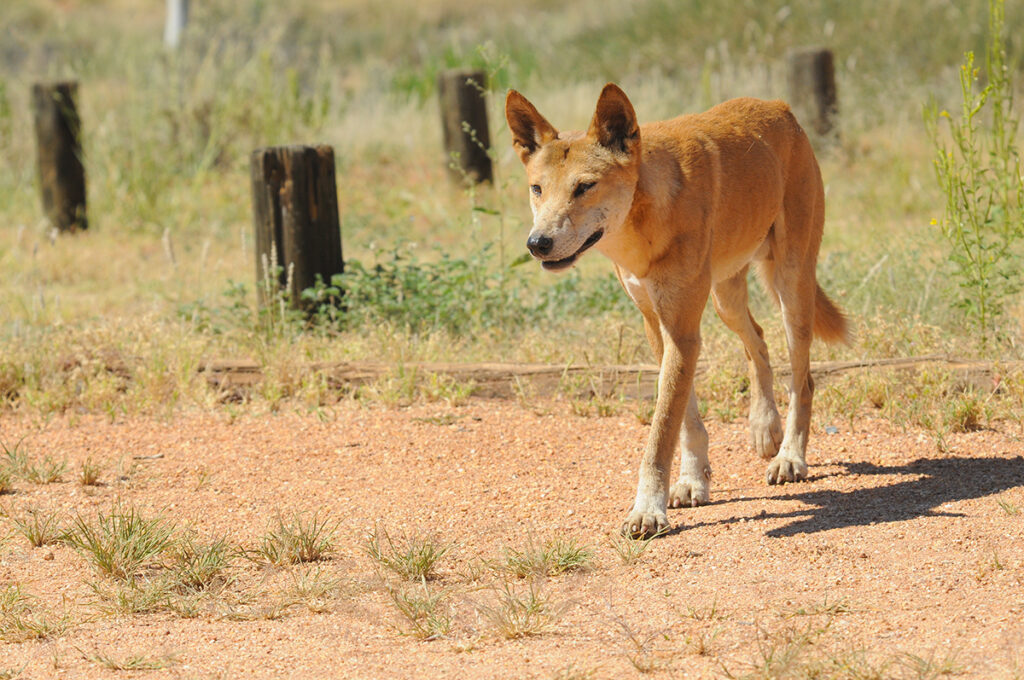
Even though Devils Marbles lie close to the tropical north of Australia, this area still has a rather dry climate and provides a unique habitat for a few interesting critters.
As soon as we pulled into the Devils Marbled car park, we were greeted by a handsome Dingo who was quite happy to laze around in broad daylight.
He was clearly accustomed to people, and it was nice to have such a close encounter with a wild dog. Most dingos we spotted on this trip were quite chilled out, but this guy was practically neighbourly.
Sitting in the middle of a huge open plain, the rocks provide a cooler, sheltered environment for plants and animals. It is not uncommon to see the black-headed goannas in boulder crevices or the larger sand goannas in the thick clumps of spinifex that grow between the boulders. Although, we didn’t see any Giana’s when we visited.
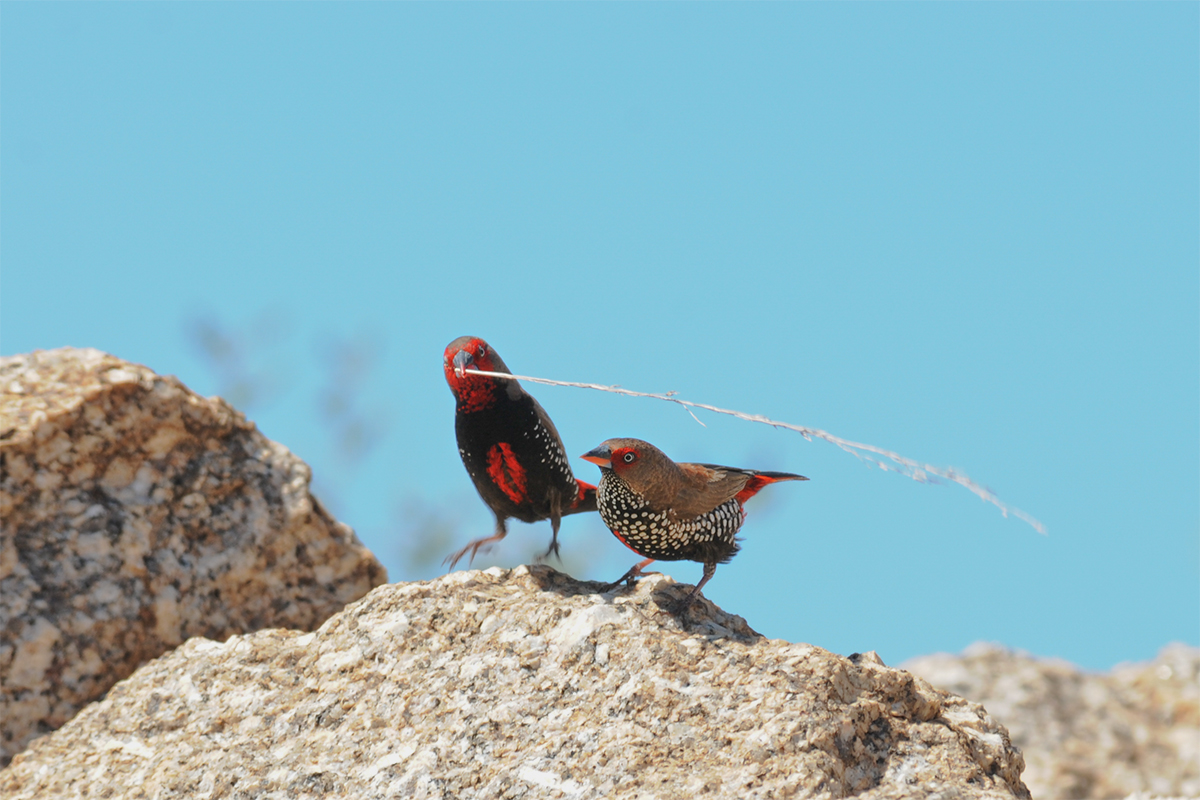
What we did see was a courting pair of a courting pair of Painted finches. We watched the male finch fly up to the female with a gift – a stalk of dry grass to be used as nest-building material. Holding the gift in his beak he proceeded to perform a dance around the female looking for a favourable sign.
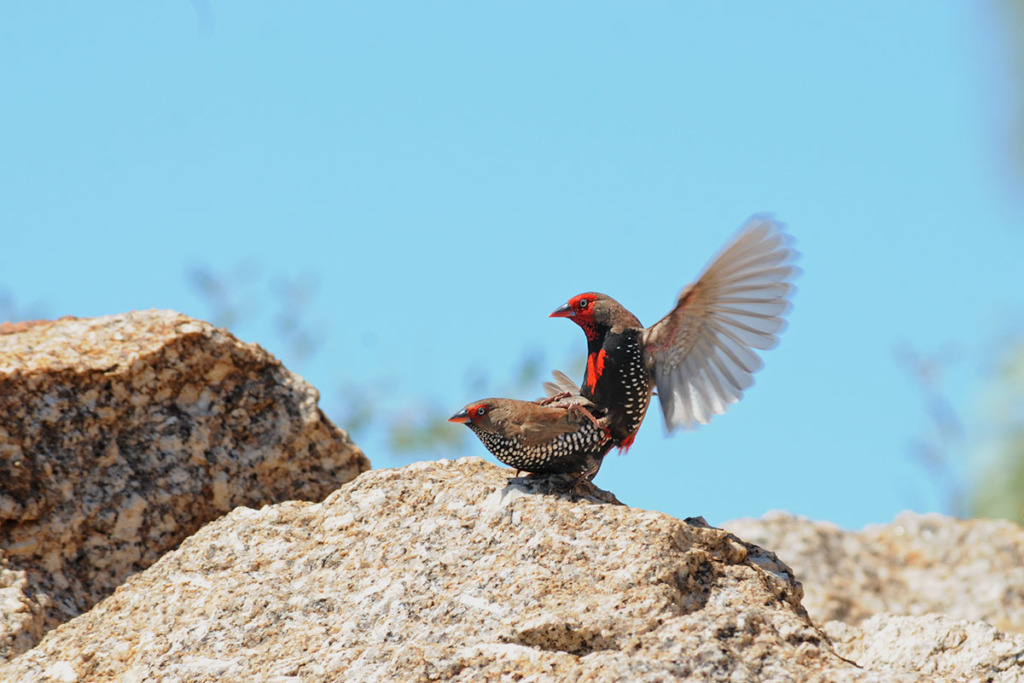
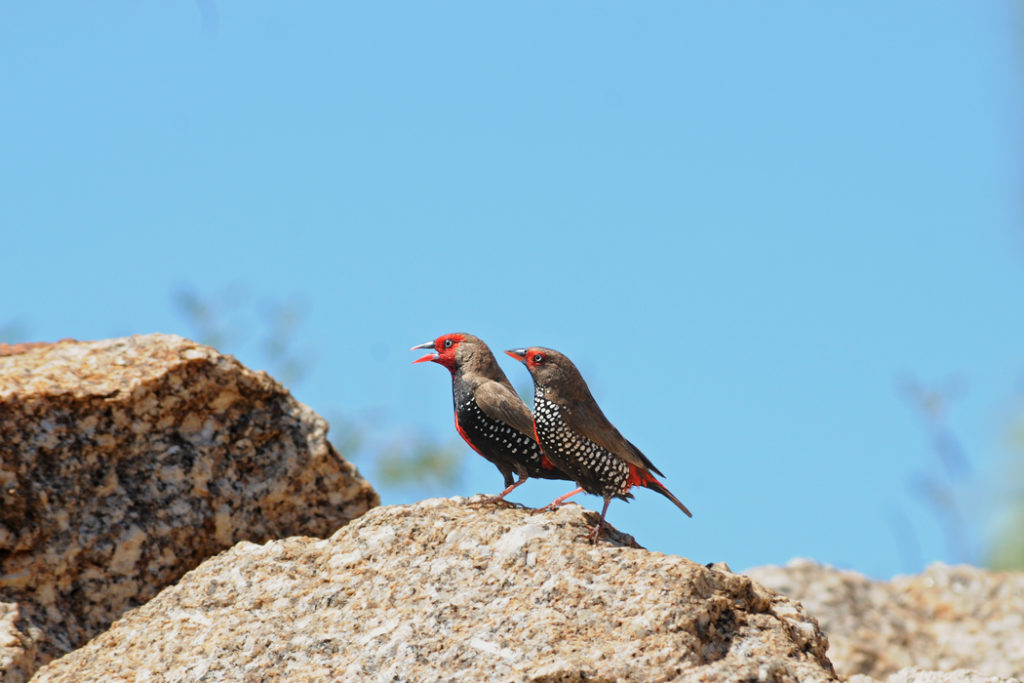
Once his efforts were approved by the female, he quickly got down to business. While the amorous part was a fairly quick affair, the pair stayed together and continued building the nest.
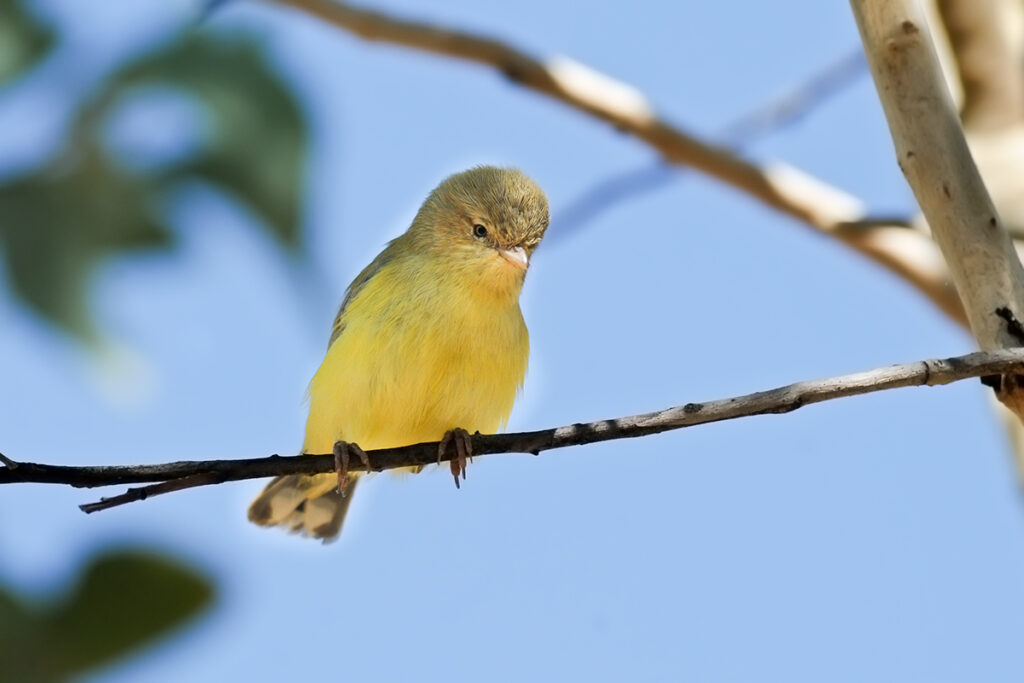
As we strolled among the marbles, a curious Weebill landed on the overhanging branches and seemed to be checking us out. Next, a Spinifexbird hopped onto a trail-side branch and let us have a good look at itself.
Apparently Fairy martins built their mud nests on the undersides of some of the overhanging boulders.
Walking Trails at Devils Marbles
There are three main walking trails at Devils Marbles. The Nyanjiki Lookout walk takes you to a panoramic viewpoint near the campsite.
The Karlu Karlu is a super short walk (20 minute return) that starts from the day use area carpark. This walk has good signage explaining the formation of the Marbles
The Nurrku Walk is the longest – a 4km loop gives you a nice opportunity to stretch your legs, see more of the marbles and encounter wildlife.
How much time do you need at Devils Marbles?
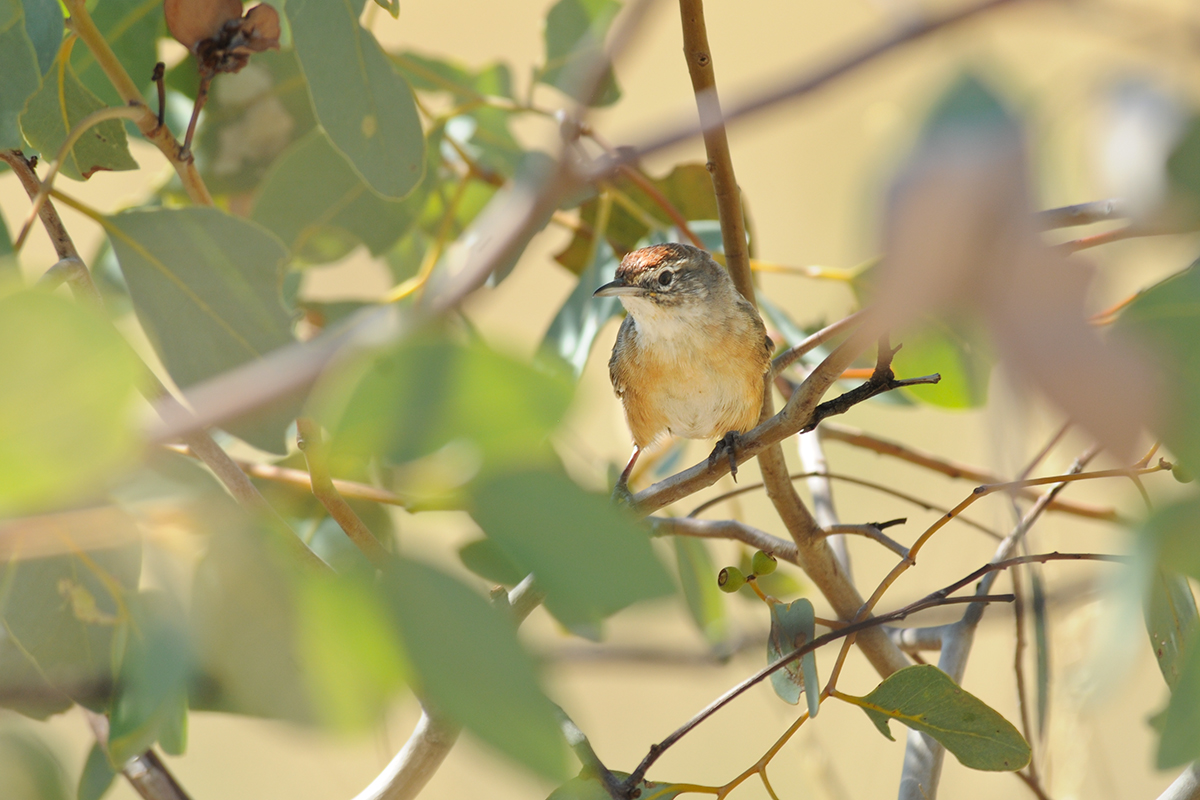
While the reserve is huge, the cluster of marbles near the car park can be explored very quickly. A few trails that crisscross the area could keep you busy for 30-40 minutes.
But if it’s not too hot, you can spend much longer meandering around, photographing the formations, or watching local wildlife go about their day.
Wycliffe Well Accommodation
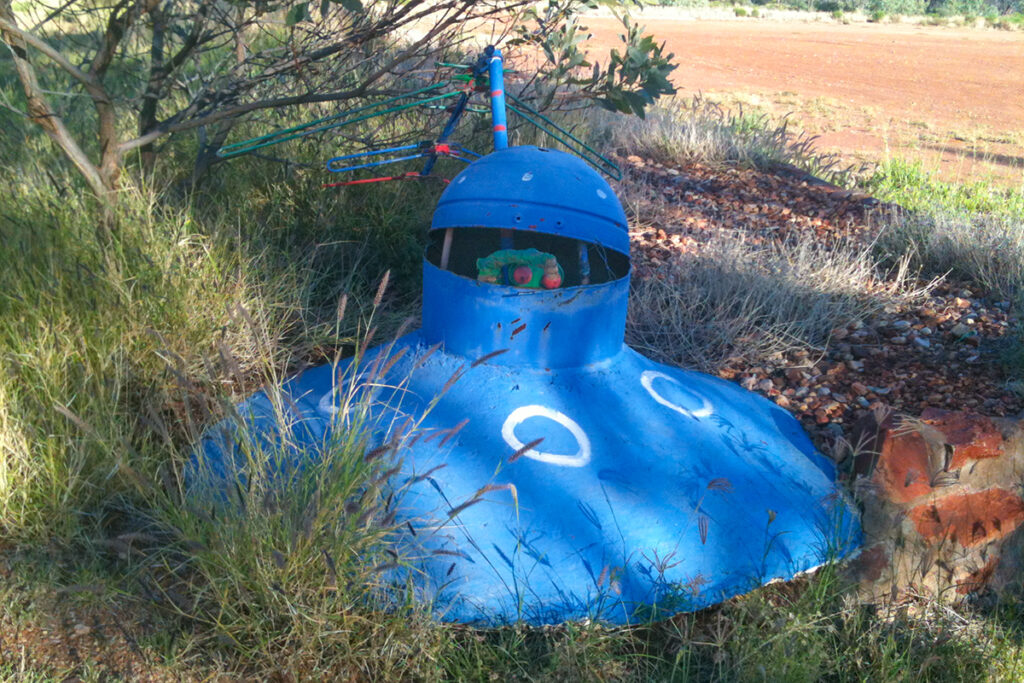
Wycliffe Well is an odd place. It is essentially a roadhouse, a petrol station and accommodation. We camped at Wycliffe Well Holiday Park among all the alien paraphernalia.
We arrived in the dark and got our first good look at the place in the morning. The decor is incredibly cheesy and gives off a vibe of a place that used to be.
A fading mural of outer space covers the main building and has two large statues of green men framing the entrance. The campsite was dotted with 70s-style alien-themed decor, and the bathrooms catered for Maliens and Femaliens.
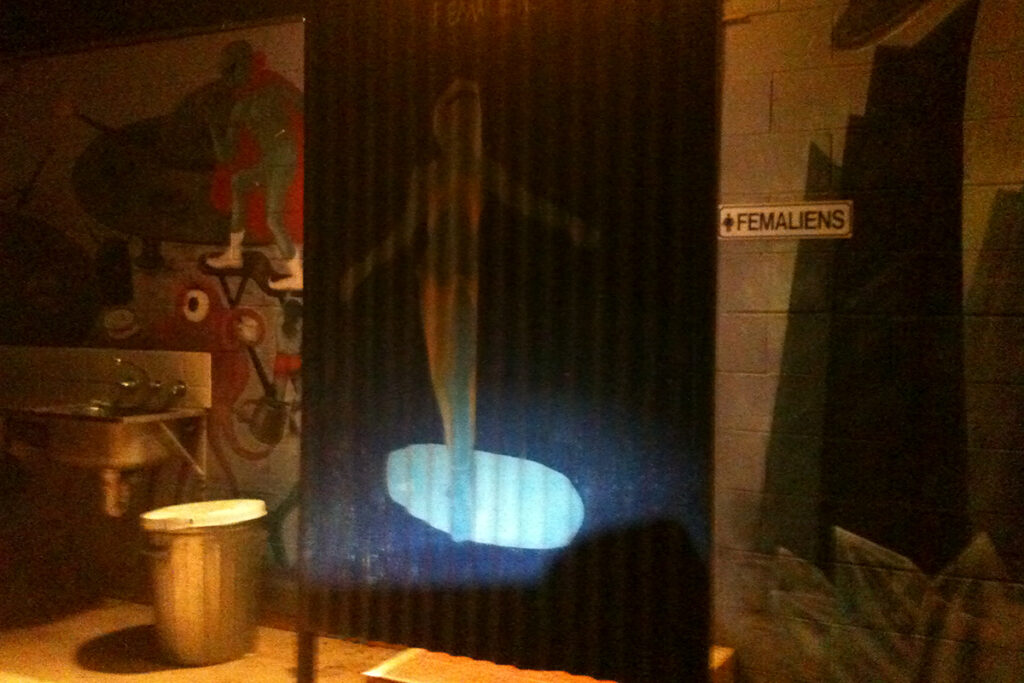
Inside the restaurant, which doubles up as reception, the walls are covered in newspaper clippings and the general message is that “if you stayed up all night looking, you would be considered unlucky not to see anything, rather than lucky to see something”.
Turns out, in its hay day, Wycliffe Well was a buzzing spot that drew tourists and UFO researchers and enthusiasts alike. According to Lew Farkas, the man who originally developed Wycliffe Well into a tourist complex, “the Galaxy Auditorium was a 300-seat restaurant with a stage for entertainment shows”.
These days are long gone, and today, Wycliffe Well looks like an abandoned theme park from the 1970s. And, given its location in the middle of nowhere, quite literally, it can give you a curious sense of cognitive dissonance.
For another trace of alien presence in the Outback, don’t miss Riddick’s spaceship in Coober Peddy.
More on Exploring Northern Territory
- The stunning West MacDonnell Ranges – Northern Territory Road trip
- Mary River: a Wildlife Hotspot in Northern Australia
- Uluru animals – Weird and wonderful creatures you can spot at Uluru
- Are Kakadu animals out to get you? Wildlife watching in Kakadu NP
- Spotting Australian Desert Animals in the Simpson Desert
- Adelaide to Darwin Road Trip: Ultimate Wildlife Safari in the Australian Outback
- Fogg Dam Conservation Reserve – An Underrated Gem Near Darwin
- Things to Do in Darwin and Beyond for Nature Enthusiasts
- Karlu Karlu / Devils Marbles Conservation Reserve

